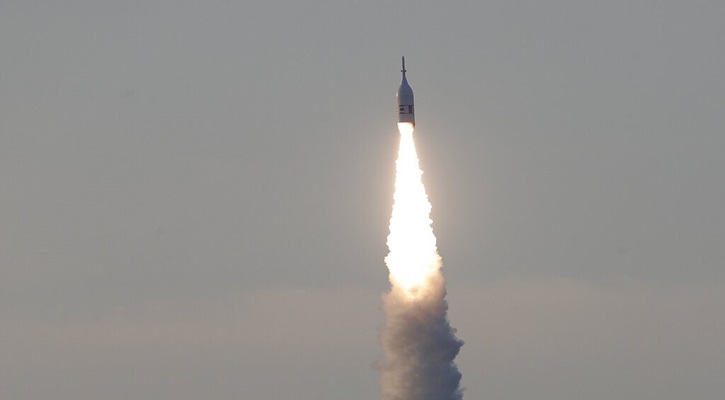Rolle im Portfolio
The iShares S&P Global Water ETF provides equity exposure to the 50 largest and most liquid companies globally involved in the water-related businesses. Most index constituents are either utilities that earn regulated returns or diverse industrial firms that have significant revenues generated from businesses related to water. The index provider's weighting scheme places a greater emphasis on firms whose primary focus is water-related business rather than the magnitude of water-related revenues. Therefore, many of the water industry's largest players--such as General Electric GE and Siemens SI--are not considered for inclusion in the index because their other business activities eclipse the relative importance of their water-related revenues. On account of these exclusions it can be argued that investing in pure-play water equities provides incomplete exposure to the overall water industry. At the time of this writing, the reference index has exhibited a high level of correlation to the MSCI World (95%) and the STOXX Europe 600 (93%) over the past five years. With this level of correlation, the diversification benefits of adding this ETF to an existing equity allocation are minimal to non-existent. Yield-thirsty investors will likely be left somewhat dehydrated by holding this ETF. Historically, the utilities sector has produced strong, stable cash flows, which have translated into higher dividends. However, as of this writing, this ETF had a dividend yield of 1.74%, slightly lower than that for the MSCI World index at around 2% and significantly less than that for a broad utilities fund like the iShares STOXX Europe 600 Utilities with a current yield equal to 4.7%. Given its narrow sector focus and surprising lack of yield for a predominantly utilities fund, investors should think twice before diving in. At best, this ETF should be deployed as a tactical tool in an already well diversified portfolio for those who hold a long-term investment thesis grounded in the need for upgrading and expanding global water infrastructure.
Fundamentale Analyse
Population growth drives the demand for clean, fresh water. However, the relationship between water consumption and population growth historically has not been one-for-one. In recent years, global water consumption has been growing at twice the rate of population growth. In order to support higher populations, water is needed in greater quantities for agricultural irrigation and livestock hydration as well as people. The United Nations projects the global population to grow 30% by 2030, and as the demand for water continues to grow accordingly, some projections place the water industry on a trajectory to exceed a trillion-USD market cap by 2020. By 2050, experts anticipate the global demand for drinking water will have doubled. Clearly, with a relatively fixed supply of fresh water, a demand spike of this magnitude will impact the price of water everywhere. Fresh water is not distributed equitably across population centers, nations or regions. Moreover, given its weight, water is not easy to transport in sufficiently large quantities. As population grows, supply and demand for water will become progressively more imbalanced especially in arid regions with contaminated water. For regions with easily accessible water resources like rivers and underground aquifers, the risk of overconsumption and inefficient recycling are real threats to the sustainability of these resources. These constraints pose a profit opportunity for firms in this index who have the know-how to efficiently treat and distribute water across the world. Growth opportunities also exist for firms with a global presence and proximity to emerging market nations, especially with regards to sanitation. At the moment, roughly 2.6 billion people do not have access to proper sanitation. To combat this problem, emerging market economies have been active in delegating resources to improving and designing new infrastructure related to waste and water management. The World Bank estimates that Middle Eastern, Asian, and Mediterranean countries could spend upwards of USD1.5 trillion to upgrade their existing infrastructure. However, many national governments face long-run budgetary constraints and lack technical expertise in assuring project quality. In response to these challenges, municipal governments have turned to private industrial firms for waste removal and supply of drinking water through public-private partnerships. Industrial firms benefit from this relationship as it allows the firms to operate environmental services without the initial high hurdle of fixed infrastructure costs. Going forward, growth will be driven by global trends towards greater desalination and water reuse, water conservation, energy efficiency and enhanced technology. In order to accomplish these operations, massive investments in water-related infrastructure will be required as existing water systems are antiquated and due to be replaced in near future. To the extent municipal governments can subsidise these infrastructure projects, firms in this index should benefit from these trends as a result of their technical expertise and global reach in these niche undertakings.
Indexkonstruktion
The S&P Global Water Index provides equity exposure to 50 companies that are involved in water related businesses around the world. In order to provide a well diversified exposure, the index distributes the constituents equally between water utilities and infrastructure, and water equipment and materials—two distinct clusters of water-related businesses. The index is a modified cap weighted index which reduces single stock concentration. Companies with water-related business as their core competency are weighted according to their market capitalisation. Multi-industry companies with significant exposure to water related businesses are only weighted at half their market capitalisation. The index is rebalanced semi-annually and there are no intra-year index additions, and intra-year deletions will only occur if a component is de-listed. At each review date, each cluster is allocated a weight of 50% and single issuer exposure is capped at 10%. As of this writing, the index is biased towards the US (36% of the index value), followed by the UK (21%) and Switzerland (11%). The largest single equity exposure is Geberit AG (9%), followed by United Utilities Group Plc (8%) and American Water Works Co (7%).
Fondskonstruktion
The iShares S&P Global Water ETF uses full physical replication to track its reference index. The fund may hold up to 20% of its NAV in securities from a single issuer in order to achieve its objectives. Under exceptional market conditions, the fund manager may invest up to 35% of the fund’s net assets in securities from a single issuer. Moreover, the fund may invest in convertibles, gilts, liquidity instruments, other transferable securities and open-ended collective investments to track the reference index. When direct investment in a component stock is not possible, the fund may, in very limited circumstances, invest in depository receipts to gain exposure to the reference index. In addition, the fund may also invest in foreign direct investments (FDIs) for direct investment purposes to achieve its objectives. The fund is domiciled in Ireland and its base currency is USD. iShares may engage in securities lending to generate additional revenues. The lending revenue generated can partially offset the TER and it is split 60/40 between the fund and BlackRock, whereby BlackRock covers the costs involved. To protect the fund from the counterparty risk that results from this practice, iShares takes collateral greater than the loan value. Collateral levels vary from 102.5% to 112%, depending on the assets provided by the borrower as collateral. Cash received as dividends from the underlying stocks is held in the fund’s income account until it is distributed to fund holders. Distributions are made on a quarterly basis. This dividend treatment can potentially create a drag on returns in upward trending markets as dividends are not immediately reinvested into the fund. In practice this cuts both ways. It could also result in outperformance if the benchmark falls in this interim period.
Gebühren
The fund levies a total expense ratio (TER) of 0.65%. This lies in the middle of the range for ETFs tracking water related equities.
Alternativen
As of writing, there are three alternative ETFs providing equity exposure to water related businesses. The next largest alternative to the iShares product in terms of total assets under management is the Lyxor ETF World Water, tracking the World Water Index. The index is produced by Societe Generale and provides equity exposure to the 20 largest companies in the water utilities, water infrastructure and water treatment categories, capping each constituent at 10% of the index total value. The Lyxor ETF uses synthetic replication and levies a TER of 0.60%.
Die in diesem Artikel enthaltenen Informationen dienen ausschließlich zu Bildungs- und Informationszwecken. Sie sind weder als Aufforderung noch als Anreiz zum Kauf oder Verkauf eines Wertpapiers oder Finanzinstruments zu verstehen. Die in diesem Artikel enthaltenen Informationen sollten nicht als alleinige Quelle für Anlageentscheidungen verwendet werden.

















